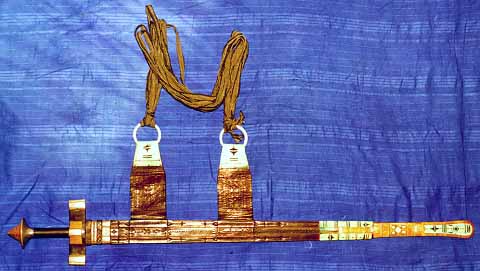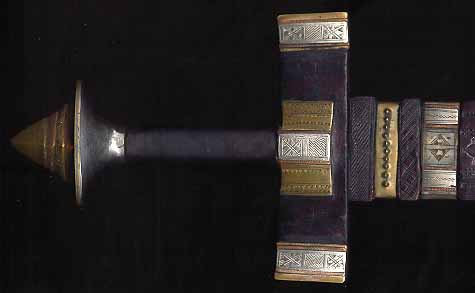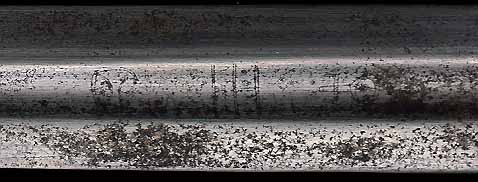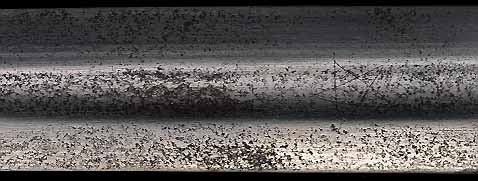| This "central" type takouba is
shown in its scabbard. The scabbard is of embossed leather, usually red-brown
to brown. The central portion of the scabbard is thin in comparison with
the sides. The elaborate brass and copper work towards the tip is typical,
including the thin blue-green leather trim. The opposite side is less embellished.
The sword is worn at the left side, nearly horizontal, but with the hilt
end slightly elevated, by means of a baldric attached to two straps emanating
from the scabbard. Briggs (1965) describes the baldrics as being of leather,
but use of several striped black and white fabric strips appears to be the
current fashion. |
| The blade has a short (22 cm.), broad fuller
on each face, extending from the cross-guard, and shows signs distally of
repeated resharpening, suggesting an older blade recently remounted. Within
the fuller are various lightly engraved symbols. In the upper picture, oriented
such that the hilt would be to the right, are three symbols: to the left
an unidentified mark (which appears to a viewer damaged by late 20th Century
American television as an "alien head"), in the center a square
divided into four compartments with obliterated contents reminiscent of
the talismanic markings on Islamic blades containing numerals, and on the
right a device with a circle and cross-like form suggesting the cross and
orb commonly seen in 16th Century German blades, which have been documented
by Briggs (1965) as known in Tuareg contexts. The lower picture, also oriented
such that the hilt would be to the right, shows a nearly obliterated serpent
on the left and a five-pointed star on the right. An indistinct punched
mark is present at the base of the blade on both sides and consists of a
V like device overstamped with another, upside-down V, such that the bases
of the Vs overlap. The engraving on the blade is almost certainly African,
presumably intended as talismanic blade markings, including mildly corrupted
markings borrowed from old imported blades of other cultures. Overall length:
97 cm. (38.3 inches); blade length: 81.5 cm. (32 inches). |







